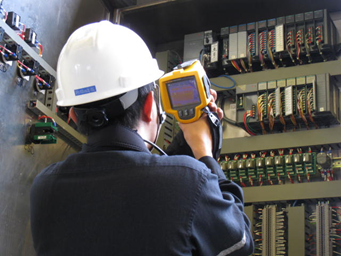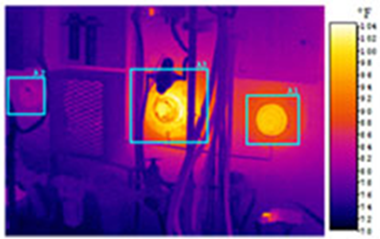

Introduction of the technology
Infrared thermography usually use a lens to focus infrared light from one object onto a detector called a thermopile. The thermopile absorbs the infrared radiation and turns it into heat. The more infrared energy, the hotter the thermopile gets.
How the technology works
An infrared thermography is a sensor that consists of a lens to focus the infrared (IR) energy on to a detector, which converts the energy to an electrical signal that can be displayed in units of temperature after being compensated for ambient temperature variation.
Application
- Turbomachinery equipment
- Boiler, steam system components
- Electrical switchboards and distribution equipment
- Motor controllers
- Internal combustion engines
- Power electronics
- Heat transport fluid system
Problem Detection
Leaky steam traps, boiler refractory cracks, deteriorated insulation, loose electrical connections, hot or cold firing cylinders, cracks on exhaust duct


